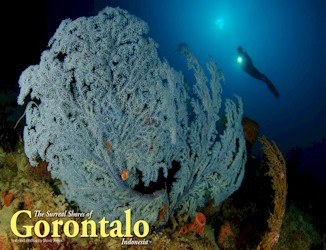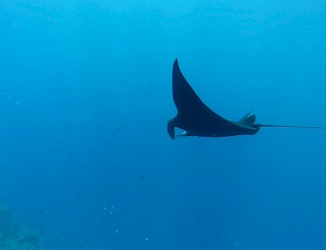Loading content - please wait...
X-Ray Magazine Features Gorontalo

X-Ray Magazine On-Line
X-Ray Magazine is the world’s first global dive publication. It is published eight times a year. And it’s free! All you need to do is sign up. In an era when print media struggles
, this on-line publication takes advantage of current technologies. It delivers an excellent dive publication directly in PDF format to interested divers via email. This saves printing and shipping costs. That is the advantage of an on-line magazine. It is also called X-Ray International Dive Magazine.
Gorontalo as Featured Destination
Take a look at the article “The Surreal Shores of Gorontalo” by Steve Jones. This page gives you a sneak preview of the seven-page feature spread. It can be downloaded from the link on that page. Steve gives his perspective on shooting underwater images in Gorontalo. These include many examples of Salvador Dali sponges. These surreal sponges are a morphology of Petrosia lignosa found only in Gorontalo. Can you find the quote from that famous Spanish painter? “When I paint, the oceans roar. Others merely paddle in their bath.” Photos by Steve include macro shots taken at both muck and coral rich dive sites.
Miguel’s Diving Professional Underwater Photo Shoots
Miguel’s Diving has been operating in Gorontalo for over a decade. We are often contacted to handle underwater photo shoots. We started learning from the pros years ago. We learned a lot while shooting for the book Gorontalo: Hidden Paradise. That means our diving guests get the benefit of our experience. Even divers with simple pocket cameras can go home with great memories – and some great photos. And your dive guide is ready with a torch to pose for you!
To enjoy our professional diving service, please make a dive booking with us at info@miguelsdiving.com






